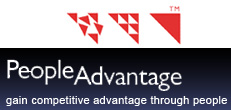When a new Information System is being implemented people need answers to the following questions:
- Why it is necessary to implement a new system?
- How will the new system work?
- How will the system impact on individual roles?
- When will the system need to be implemented?
- What will people need to know about the system within the context of their roles?
- How will they get this knowledge?
- Who will do the training?
- When will the training occur?
Resistance to the new system will grow in proportion to how vague and general the IT group is about the change, and how much time it takes to answer people’s questions.
So how can an Information Technology group avoid the growth of resistance across the organisation?
1. Perception
People need to see the problems that the existing system creates. For this to occur their awareness needs to expand beyond their day-to-day use of the existing system. A shift in consciousness needs to occur. Such a shift is like the illustration of perception in Psychology 101. We first see a vase then a shift occurs and we see the profile of a young women – white to black.
People’s resistance will remain high when they cannot see how necessary it is to change to the new system.
2. Intellectual
If the perceptual shift has occurred people are able to accommodate and understand the reasons for the need to develop and implement the new System. At this stage IT groups need to focus on explaining the logic of, and demonstrating, how the new system will improve people’s working life.
Many IT groups jump straight to the Intellectual and focus on reasoning and logic rather than first helping people to achieve the perceptual.
3. Emotional
If people have experienced the perceptual shift, and have sufficient understanding of the reasons and logic for the change, then they are likely to be emotionally ready to change. This means they are emotionally committed to the change rather than just passively acquiescing. Passive acquiescence is not commitment and usually results in ongoing resistance, particularly passive aggressive behaviour, eg undermining the operation of the new system.
4. Behavioural
When people can see the need for change, understand the reasons and logic for the change and are emotionally committed to the change, they are ready to learn new ways of working. At this stage IT groups need to support learning. This includes helping to build people’s confidence in working with the new system.
Summary
Many instances of change failure are due to IT groups focusing on the Intellectual factors before the perceptual shift has taken place. This is often followed by a focus on training (Behavioural) before an emotional commitment has occurred.
If you are an IT manager experiencing considerable resistance it is worthwhile stepping back and asking a few questions:
· Have I moved too far ahead of people’s conceptual understanding?
· Have I been able to expand people’s awareness about the need for change?
· What evidence do I have that people are ready to accommodate and understand the reasons for the change?
· How do I know if people have an emotional commitment to the change?
· Are people seeking support to learn new work behaviours?; Or
· Are people passively acquiescing?
For more information on Technological Change See Technological Change: The Critical Role of Organisation and People Values posted on 7th September 2008 – Category – Technological Change.
Dallas Burgess
© PeopleAdvantage Pty Limited 2008 All Rights Reserved
.

